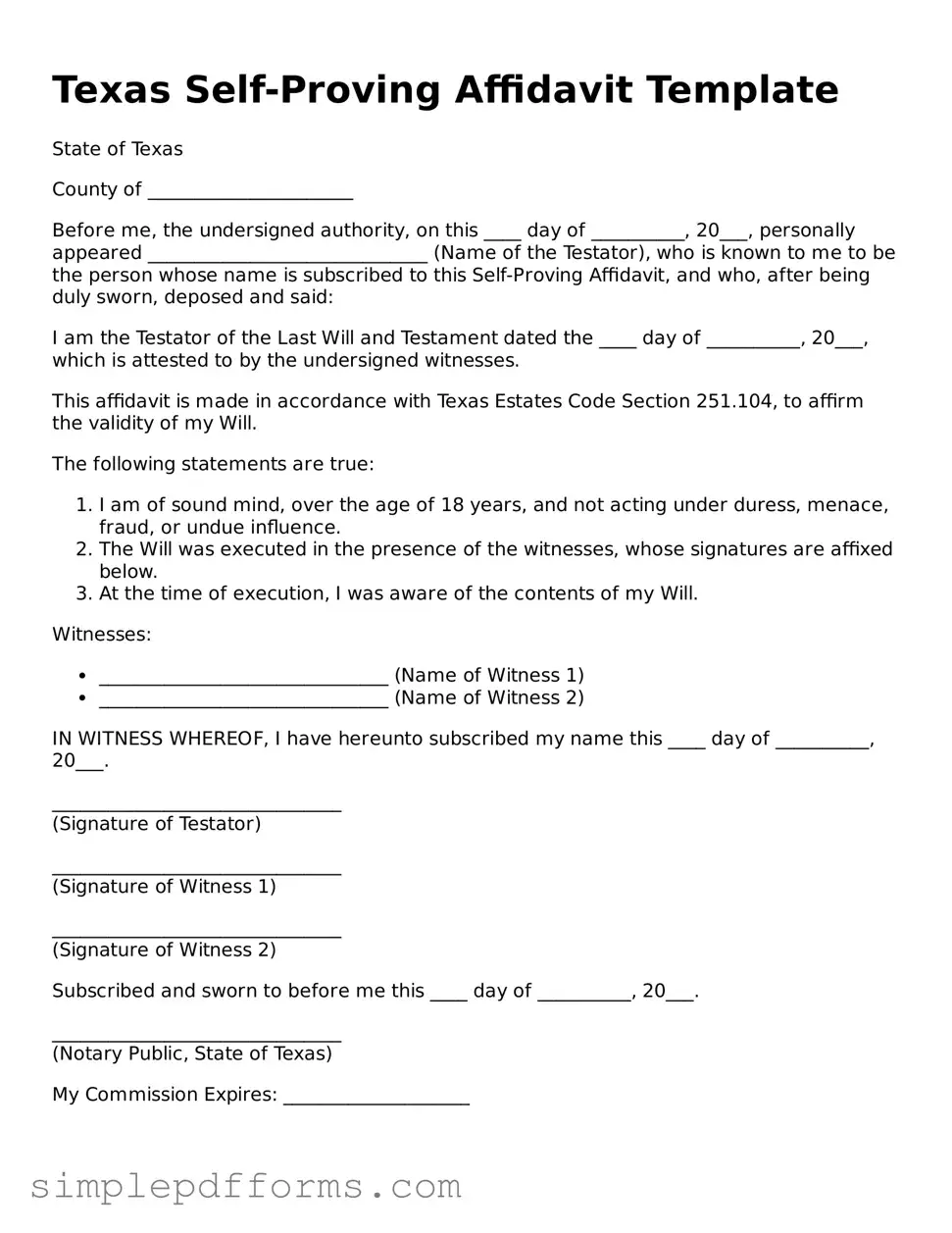Texas Self-Proving Affidavit Template
State of Texas
County of ______________________
Before me, the undersigned authority, on this ____ day of __________, 20___, personally appeared ______________________________ (Name of the Testator), who is known to me to be the person whose name is subscribed to this Self-Proving Affidavit, and who, after being duly sworn, deposed and said:
I am the Testator of the Last Will and Testament dated the ____ day of __________, 20___, which is attested to by the undersigned witnesses.
This affidavit is made in accordance with Texas Estates Code Section 251.104, to affirm the validity of my Will.
The following statements are true:
- I am of sound mind, over the age of 18 years, and not acting under duress, menace, fraud, or undue influence.
- The Will was executed in the presence of the witnesses, whose signatures are affixed below.
- At the time of execution, I was aware of the contents of my Will.
Witnesses:
- _______________________________ (Name of Witness 1)
- _______________________________ (Name of Witness 2)
IN WITNESS WHEREOF, I have hereunto subscribed my name this ____ day of __________, 20___.
_______________________________
(Signature of Testator)
_______________________________
(Signature of Witness 1)
_______________________________
(Signature of Witness 2)
Subscribed and sworn to before me this ____ day of __________, 20___.
_______________________________
(Notary Public, State of Texas)
My Commission Expires: ____________________
